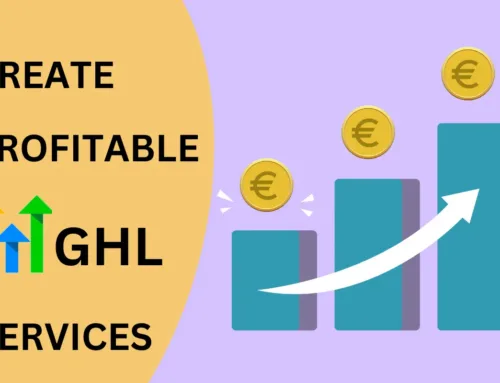Just because you’ve launched a PPC campaign doesn’t mean you can now kick back and relax. Just like with any other aspect of digital marketing, you need to invest your time and resources in tracking your campaign performance regularly.
Proper measurement of your PPC efforts is the only way to understand what practices work for you, identify your major pain points, boost your tactics, and maximize your return on investment.
Here are a few tips that will help you track your paid ad campaigns effectively.
Set Clear Goals and Align them with your Metrics

When launching your PPC campaign, you need to think of it as an investment in the long run. Keep in mind that the growth of your campaign performance is gradual and that it takes time. You cannot simply compare a campaign you launched 10 days ago with the one that has been going on for weeks or months. Logically, as your campaign grows, your perceptions, goals, and metrics will also change.
Precisely because of that, you need to focus on those metrics that are relevant to you. Keep in mind that not all metrics are the same. They vary from business to business. Moreover, they depend on your specific goals and results you want to achieve. To determine what you want to measure and how far you are from achieving your benchmarks, you first need to set realistic PPC goals. For example, boosting conversions and increasing brand awareness require the use of different tactics and the metrics you will use to track them will also be different.
Reporting on PPC Metrics
Keep in mind that the metrics we’ll be talking about are not mutually exclusive. On the contrary, they tell different parts of your PPC story and you should observe them simultaneously to get broader insights into your campaign performance.
For example, you cannot have an outstanding CTR if your Quality Score is low, as these two KPIs are closely related. On the contrary, your conversion rated contextualize your click-through rates, telling you whether the traffic your ads are driving is profitable for you.
With all of that in mind, it’s of paramount importance that advertisers start observing their campaigns holistically. This is where digital marketing reporting tools can help. My personal favorite is Reportz because it lets me combine the features from different tools like Google Ads or Facebook Ads and track only those metrics relevant to my campaigns.
Now, this doesn’t mean you should report on every metric you will find in this or any other guide. These are some basic metrics that may serve as your good starting point. So, take a step back, see what your goals are and focus on those metrics that will help you stay focused on those aspects of your campaign that make sense.
What KPIs to Track?

After setting clear goals for your paid ad campaign, it will be easier for you to choose the right KPIs to track. There is a wide range of tools and metrics you can use to track the effectiveness of your PPC campaigns. Here are some of them:
1. Click-Through Rate (CTR)
Just like its mere name says, the CTR tells you how many people clicked on your ad after seeing it. You can calculate it by dividing the number of clicks on your ad by the number of impressions.
The WordStream report emphasizes that the average click-through rate is about 3.17%. However, these numbers vary depending on your industry. For example, the average CTR in auto industries is about 4%, while the technology industry has a far lower CTR of only 2.09%.
Measuring the CTR is important, but this is one of those metrics that should never be isolated from other metrics. In one of his articles for Search Engine Land, columnist Jacob Baadsgaard emphasized that the higher CTR usually leads to fewer conversions. If you’re targeting the wrong audience and driving irrelevant traffic, those people will simply leave your site without buying from you. This is why you should always observe your CTR together with your conversions and bounce rates.
2. Quality Score
Quality Score is Google’s metric that tells you whether the combined use of your keywords, landing page, and ad formats meets your target audience’s expectations. Precisely because of that, Google is constantly updating this metric. For example, in 2017, they introduced the option of monitoring historical Quality Score information in AdWords. This is a great option for every marketer, as they now can compare the performance of their paid ad campaigns over time and get better insights.
As for measuring Quality Score, well, it’s a score. Google rates your ad relevance on a scale from 0 to 10 and a strong score the one above 7. No matter how confusing it may seem to you right now, measuring your Quality Score is crucial, as this metric directly impacts the performance of your ad on Google and impacts other metrics, such as your click-through rate or cost per conversion.
3. Cost Per Acquisition (CPA)
Also known as cost per conversion (CPC) and cost per action, cost per acquisition is considered a fundamental PPC metric. Google defines it as the price you need to pay for every customer conversion (acquisition). And, the way you measure it is simple- by dividing the total cost of your customer conversions by the number of conversions.
This KPI directly shows you how profitable your campaigns are. According to the WordStream report mentioned above, the average cost per action is $59.18, but this number varies. For example, the technology sector has the highest CPA of $55.21, while the lowest one belongs to the education industry and it’s only $7.85.
Sure, to understand your CPC, you need to focus on your specific goals and metrics. If your campaign costs more than what you gain from generating a new lead, then this is a clear sign that something’s wrong.
4. Bounce Rate

The bounce rate is one of the most significant metrics in the digital marketing landscape, as it shows you how many people left your site without converting. In other words, it shows you how effective or ineffective your PPC tactics are. For example, a high bounce rate may indicate that your messaging doesn’t fit your landing page or that you’re simply targeting wrong audiences.
5. Copy Testing
Even though your ad copy is not a metric, it is still an important indicator of how effective your PPC tactics are. This is exactly why you need to constantly run A/B tests and choose those versions of your ad copy that resonate well with your target audiences. Here are a few steps to take when comparing different forms of your ads:
- Align your unique selling propositions and deals with your customers’ expectations. For example, if they value price over product quality, then this is what you should focus on.
- See what messaging resonates with them. Do they appreciate brand creativity or straightforward messaging?
- What CTAs gain more traction? For example, check whether your “Learn More” call to action resonates better with your audiences than “Apply Now.” Also, pay attention to the impact of your CTA placement on your ad clicks and conversions.
Over to You
Measuring the success of your PPC campaign is important because it helps you find out what tactics work and which ones you need to improve. Make sure you set clear goals to keep you on track, tie the right metrics to them, use the right tools to track your results and you’re golden!
Hope this helps!




